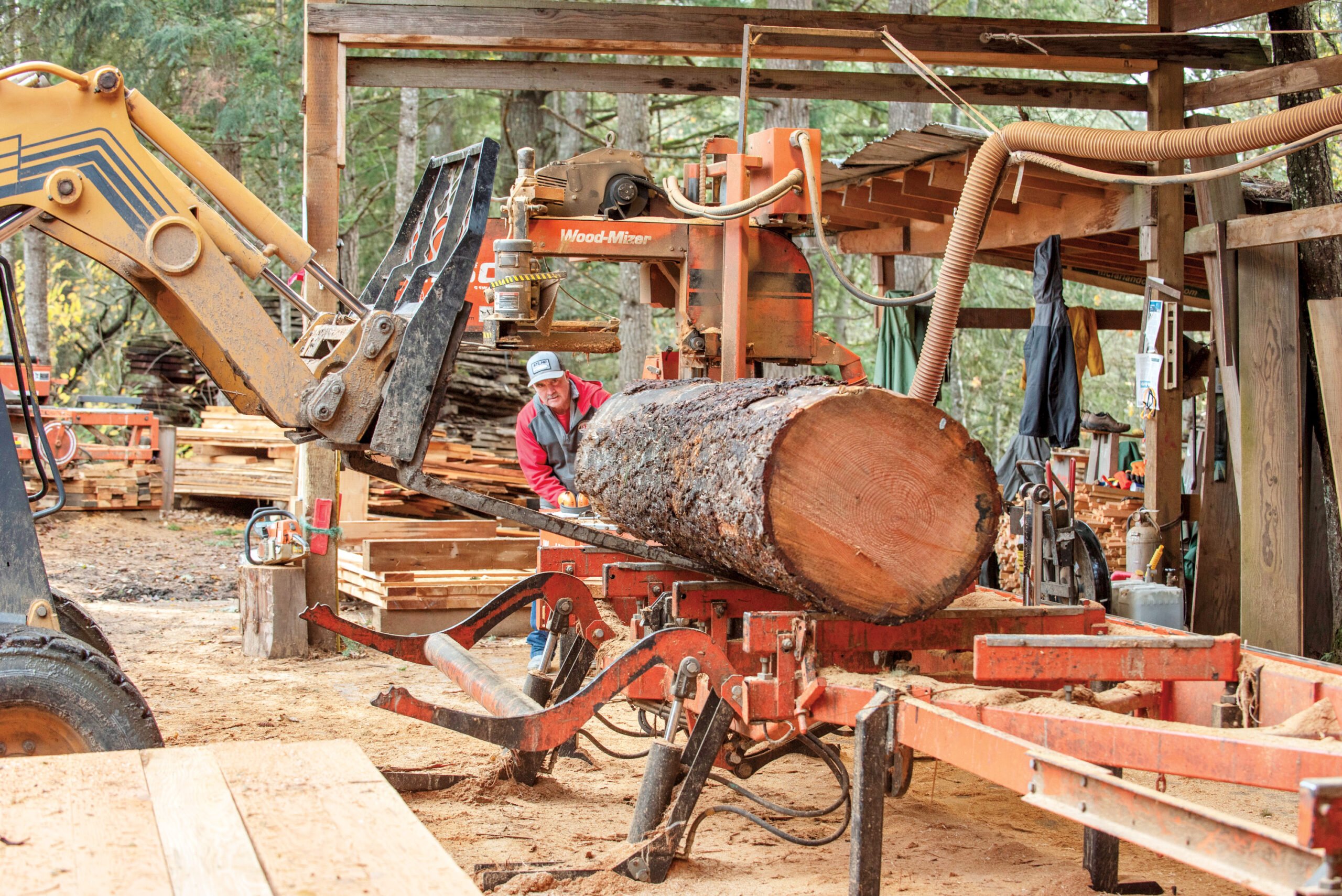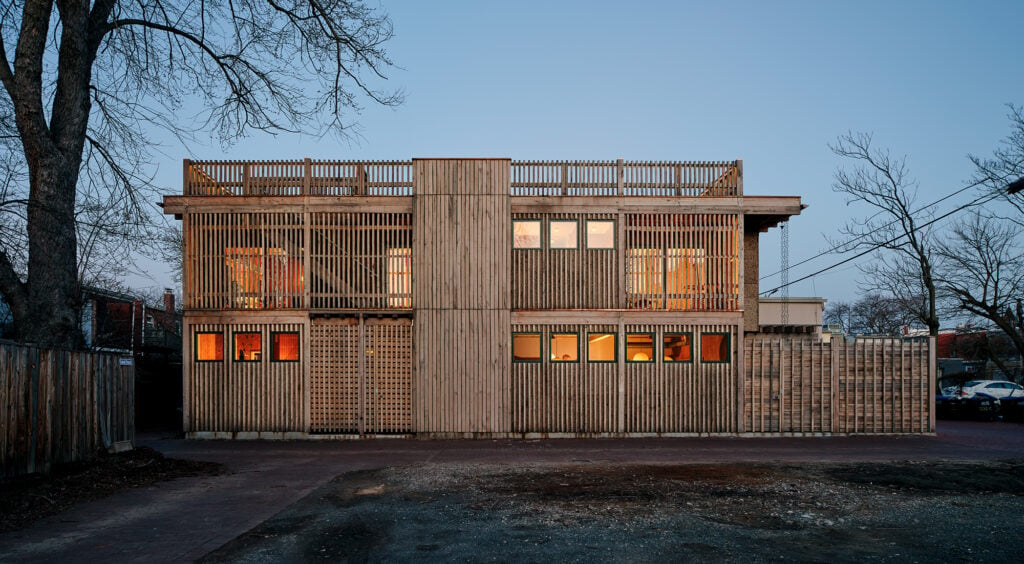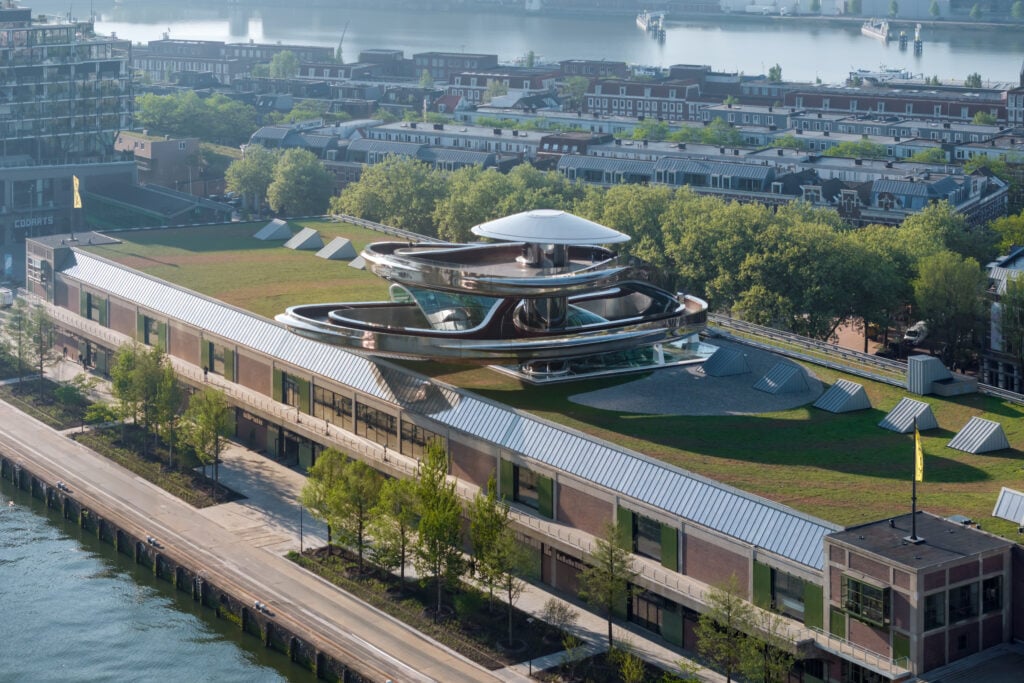
February 21, 2025
How Upstream Calculated the Carbon Footprint of Portland’s New Mass Timber Terminal

3 Goals for Climate-Smart Forestry
“We needed to rethink biogenic carbon,” Dunn says, explaining that the forest and built environments are interconnected. The wood in a building isn’t isolated but part of a larger carbon cycle that must be optimized for climate-smart forestry. The goal is to increase the amount of carbon stored in wood, reduce emissions by substituting wood for steel or concrete, and promote the reuse of durable wood products.
The tool’s basic approach involves calculating the carbon sequestration in a forest over time and dividing that by the amount of wood harvested. Using both observed satellite data and NASA resources, the team measured how much biomass grew on specific lands over the past 30 years. Satellite tools like lidar could analyze forest growth on a per-pixel basis, tracking changes in carbon stocks across small or large tracts of land.
At Portland Airport, the team connected this data with their wood sourcing, applying carbon factors to the wood based on its origin. “This was the ‘aha’ moment,” Dunn says, as they began quantifying how much carbon each forest saved or emitted. The variation was significant depending on the data set and forest in question. These discrepancies also opened the conversations about forest stabilization and rotational patterns as regeneration practices.
According to the ZGF team, the case study cemented three principles for climate-smart sourcing in the region: first, understanding how harvest practices in the Northwest can influence carbon storage; second, evaluating whether the forest is increasing its carbon stocks over time; and third, working with definitions and frameworks to ensure that forests are managed sustainably, stabilizing carbon where needed.
By integrating these data sets, UpStream has provided the tools to analyze and optimize wood’s role in the carbon cycle. Portland Airport is proof of the concept’s potential to guide climate-conscious building practices for the region and the entire nation.

Would you like to comment on this article? Send your thoughts to: [email protected]
Latest
Profiles
BLDUS Brings a ‘Farm-to-Shelter’ Approach to American Design
The Washington D.C.–based firm BLDUS is imagining a new American vernacular through natural materials and thoughtful placemaking.
Projects
MAD Architects’ FENIX is the World’s First Art Museum Dedicated to Migration
Located in Rotterdam, FENIX is also the Beijing-based firm’s first European museum project.




